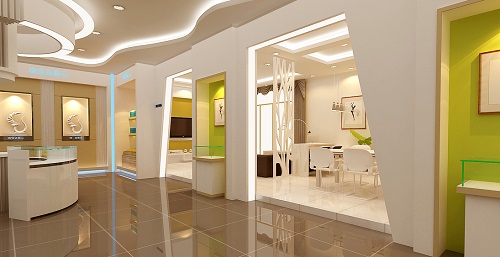








Perhaps the most striking thing about the LED revolution is the speed with which it has transformed our industry. A solid majority of our company's business is LED-related now, and it happened in a span of less than four years.
Interested in articles & announcements on IoT & LED lighting applications?
This was a watershed moment because the lighting industry has traditionally been slow to change, with product cycles that typically lasted 20-30 years. Since the arrival of solid-state lighting (SSL), things are moving at a much faster pace, with 6-12-month product cycles.
Prepare for IoT - The next revolution in LED lighting
Indeed, the next revolution is approaching fast - harnessing the full potential of Internet of Things (IoT) technology. The companies that learned valuable lessons during the rapid proliferation of LEDs will be the ones best equipped to offer innovation, leadership, and education in the IoT revolution.
Now in its 70th year, our company has to be nimble and responsive to thrive. We weren't blindsided by the shift to LED technology like many others. The companies that were able to adapt quickly fell into two main categories: They were either part of organizations (like our parent company, Panasonic) that had familiarity with LED technology through other product segments, or they were forward-looking enough to get involved early on in the development of LED technology through significant R&D investments.
Still, rapidly refocusing our entire company has brought challenges. For example, more technological competence is required of our sales team to educate customers about LED products. Moreover, the manufacturing technology needed to build cost-efficient, reliable LED drivers is more complex than that needed for manufacturing a traditional electronic ballast. The number of components often doubles, yet they're fitting in the same case - and that requires more precise production capabilities. That's why we've made major investments in manufacturing equipment that can provide the speed, quality, and tolerances needed.
In the traditional fluorescent world, there are typically three or four different wattages and a handful of variations. But with LED, we've had to greatly expand the number of SKUs needed to meet demand.
In just a short period, we reshaped our company to deliver the many benefits of LED flexibility, including quick response from zero to full brightness, advances that make SSL extremely dimmable and controllable, and the availability of different colors that can be precisely tuned, merged, and mixed.
Now we're on the threshold of the next revolution - the programmability offered by IoT technology. The speed at which this revolution takes hold will depend in large part on the cost/payback benefits that we as an industry can provide to our customers. In short, it's our job to make IoT so attractive that it becomes the standard.
Currently, every control scenario represents a significant cost addition. It's difficult to get a payback if you have to add labor and installation costs to a retrofit, and the cost benefits of LED make this even more difficult. Cost pressures aren't going to vanish anytime soon, and adding even $0.50 of cost to a light fixture is hard to swallow if you're not sure that the end user will use those controls.
The challenge before us is to make products that are ready for controls so that if customers want to add controls down the road, they don't have to replace the hardware in the ceiling. We are beginning this journey with our new line of drivers that provide power to sensors in the ceiling and communicate to those sensors via Bluetooth. This product line completely removes hardware costs from the equation and allows customers to add controls easily at a later date.
It will likely take a few years for this type of product to become an industry standard, but there's enough movement to create a baseline of demand. The IoT market is moving so rapidly that it makes it difficult for the Department of Energy to develop standards. But California Title 24 will have a big influence on the regulatory environment, and there will no doubt be a national push to begin requiring a certain level of controls capability.
It's ironic that after 120 years of electrical lamp technology, LED innovation brings us full circle to deliver all of the benefits of the original incandescent bulb at much higher efficiency, but without the tradeoffs. With LED lighting, there are almost no compromises; now the technology is on the verge of reaching its full potential. Get ready for the revolution in IoT programmability.
Copyright 2006-2025 Shanghai Sinoexpo Informa Markets International Exhibition Co., Ltd. All rights reserved